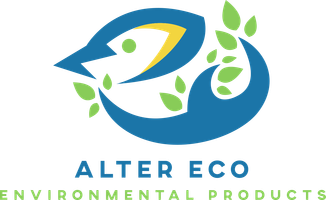Get The Facts About Biodegradable Products!
This section highlights the environmental advantages, as well as the considerations you should keep in mind when choosing eco-friendly alternatives.
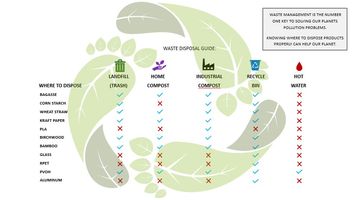
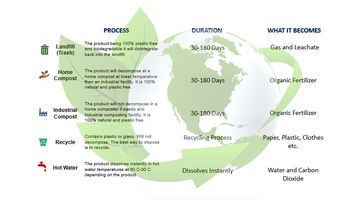
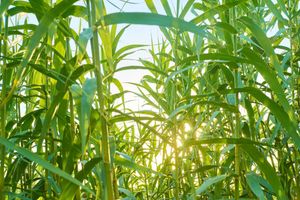
Bagasse Products
A biodegradable byproduct of sugarcane, created after the juice is extracted from the stalks. It is primarily made of cellulose, hemicellulose, and lignin, giving it strength and durability. Bagasse has many uses, including:
► Paper Products
► Fuel
► Building Materials
► Food Packaging
► Soil Amendment & Fertilizer
► Animal Food
Bagasse products are compostable, breaking down in as little as 30 to 90 days, depending on environmental conditions. Unlike plastic, bagasse can be composted at home, offering a sustainable solution to reduce waste.

PLA
PLA (Polylactic Acid) plastic is a biodegradable alternative to traditional plastic, made from renewable sources like corn starch, sugarcane, cassava, seaweed, or shrimp shells. The process of creating PLA involves fermenting these sources into lactic acid, which is then polymerized to form a plastic material. PLA plastic can be used in a variety of products, including:
► Packaging
► Medical Implants
► Mulching Films
► Tea Bags
► Upholstery
► Disposable Clothing
► Feminine Hygiene Products
► Diapers
PLA plastic breaks down in industrial composting facilities within 1 to 3 months. While PLA is a more sustainable option compared to petroleum-based plastics, it requires specific composting conditions for optimal degradation.
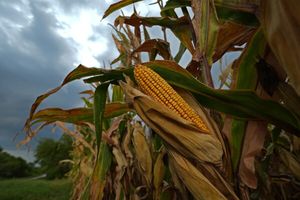
Cornstarch
Cornstarch products are made from the starch extracted from corn, a renewable and abundant resource. The process begins by breaking down corn kernels into starch, which is then processed into biodegradable plastics or molded into various products such as:
► Packaging, Bags, and Disposable Utensils
► Pens, Mugs, and Rulers
► Biofuel
These products are compostable and typically break down in 1 to 6 months in industrial composting conditions.
Cornstarch-based items are beneficial to the environment because they:
► Reduce greenhouse gas emissions
► Are made from renewable resources
► Can be used as fertilizer when disposed of correctly
► Reduce landfill trash
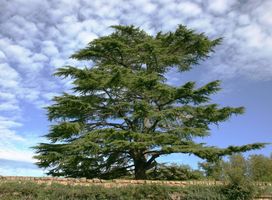
Kraft
Kraft paper is a strong, durable, and eco-friendly material made from wood pulp, typically from softwood trees. It is created through a chemical process known as the Kraft process, which involves cooking wood chips in a mixture of chemicals to separate the cellulose fibers. The result is a product that is:
► Biodegradable
► Recyclable
► Durable
► Eco-Friendly
► Versatile
► Natural
These products are compostable, breaking down in as little as 2 to 5 months in composting conditions.
